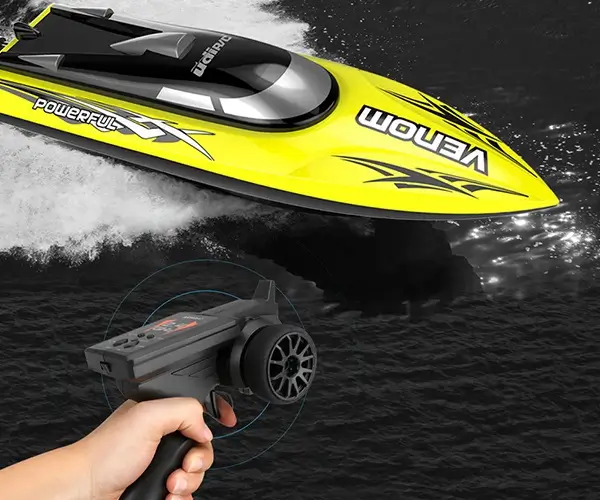Unlocking Robotics Creativity: How to Use IR Sensors with Servo Motors on Arduino
In the world of robotics, sensors and actuators are the essential building blocks that bring machines to life, allowing them to perceive their environment and respond accordingly. Among the myriad of sensors available, Infrared (IR) sensors hold a special place, especially for hobbyists, educators, and experimenters. When combined with the versatile servo motor—an actuator capable of precise position control—the possibilities become endless, from obstacle avoidance robots to automated systems.

Understanding IR Sensors and Servo Motors
Before diving into the wiring and coding, it’s important to grasp what IR sensors and servo motors do and how they work.
IR Sensors:
Infrared sensors detect IR light. They typically consist of an IR LED that emits IR light and a photodiode or phototransistor that detects IR light reflected from objects or emitted by IR sources. They are commonly used for proximity detection, object avoidance, line following, and non-contact distance measurement.
IR sensors are prized for their simplicity, affordability, and rapid response times. They can be reflective—bouncing IR light off surfaces and detecting the reflection—or transmissive, detecting IR passing through an environment.
Servo Motors:
Servo motors are rotary actuators that can rotate to specific angles within a limited range (usually 0°–180°). Unlike continuous rotation motors, servos employ feedback systems, making precise control possible. They are popular in robotics for controlling limbs, steering mechanisms, or sensors.
Why Combine IR Sensors with Servo Motors?
The synergy of IR sensors and servos enables a robot to see and act. For instance, an IR sensor can detect an obstacle, and the servo can turn a sensor arm to scan the environment or steer a robot’s wheels or arms in response. This combination fuels interactive, autonomous projects.
Setting Up Your Hardware:
To get started, you'll need the following components:
Arduino board (Arduino Uno, Nano, or compatible) IR sensor module (reflective IR sensor or IR proximity sensor) Servo motor (standard hobby servo) Breadboard and jumper wires Power supply (if needed for the servo) Optional: LEDs for status indication
Wiring Guide:
IR Sensor: VCC to Arduino 5V GND to Arduino GND Signal pin to an Arduino digital input pin (e.g., pin 2) Servo Motor: Power (red) to Arduino 5V (or external power if multiple servos are used) Ground (black/brown) to Arduino GND Control signal (yellow/orange) to a PWM digital pin (e.g., pin 9)
Ensure your power supply can handle the servo's current demands, especially if multiple servos are involved. For a single servo, powering directly from Arduino is usually fine, but for more stability, consider an external power source.
Basic IR Sensor with Servo Code for Arduino
Now that you've set up your hardware, here's a simple sketch to get the IR sensor reading and control the servo position.
#include const int irSensorPin = 2; // IR sensor input pin const int servoPin = 9; // Servo control pin Servo myServo; void setup() { pinMode(irSensorPin, INPUT); myServo.attach(servoPin); Serial.begin(9600); } void loop() { int irValue = digitalRead(irSensorPin); Serial.println(irValue); if (irValue == LOW) { // Detect object (assuming active LOW) // Turn servo to face obstacle myServo.write(90); // Middle position } else { // Scan environment for (int pos = 0; pos <= 180; pos += 1) { myServo.write(pos); delay(15); } } delay(100); }
This basic code makes the servo sweep from 0° to 180°, allowing it to scan surroundings, while the IR sensor detects obstacles and sends data to the serial monitor. When the IR sensor detects an obstacle (depends on your module’s characteristics), the servo centers or moves accordingly.
Understanding the Code:
Servo Library: Simplifies servo control. IR sensor reading: digitalRead() detects the presence of an object; some sensors might use analog values instead. Positioning: When an obstacle is detected, the servo moves to face forward; otherwise, it performs a sweep. Serial Monitor: Used for debugging and observing sensor data.
Expanding Your Project:
This foundation opens the door to a variety of robotics projects:
Obstacle-avoiding robot: Using IR sensors mounted on a servo arm to scan for obstacles and navigate around them. Line follower with sensor steering: Combining IR reflectance sensors to follow lines, with servo-actuated steering. Object tracking: Using IR sensors to detect and track objects, turning sensors or camera mounts with servos. Security systems: Detect intruders with IR proximity sensors, and activate alarms or lights.
In the next part, we’ll explore advanced coding techniques, integrating multiple IR sensors for more intelligent systems, controlling multiple servos, and practical tips for robust robot design.
Established in 2005, Kpower has been dedicated to a professional compact motion unit manufacturer, headquartered in Dongguan, Guangdong Province, China.




































